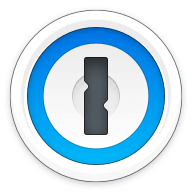1Password for Android offers just what the name says: the convenience of one master password that is activated with one click, generates high security unique passwords for all your favorite sites, and automatically recalls them for you when needed. AgileBits Update Server. This server is used by our apps for updates. You can also find downloads, latest version information, and full release notes here. Couldn’t connect to 1Password. Either the helper is not running, or something is preventing it from communicating with the 1Password browser extension. Follow the simple steps on our support site or contact us.
Open 1Password and unlock the vault you want to export. Choose File Export. Choose a format: 1Password Interchange Format (.1pif) to move data to another copy of 1Password. Comma Delimited Text (.csv) to move Login items to a different app. Only Login items are exported in this format. Enter a filename and click Save.
1Password works everywhere you do. Easily sign in to sites, use suggested passwords, and find what you need. Everything is available at your fingertips.
Get 1Password for:
If you’re using Safari, get to know 1Password for Safari.
Save a login
To save a login, enter your username and password. Then choose Save in 1Password.
To update an incorrect or incomplete login, make your changes, then choose Save in 1Password and click Update.
Fill logins and other items
To fill an item, click and choose it.
If 1Password suggests more than one item, you can use the arrow keys to select the one you want.

Or start typing to find it.
Use a suggested password
1Password suggests strong passwords when you’re changing a password or signing up for a new account.

To use a suggested password, click in a password field and choose Use Suggested Password.
Create a custom password
You can use the 1Password pop-up to create custom passwords. To open the pop-up, click in your browser’s toolbar.
To create a custom password, click and choose Password Generator.

Adjust the settings for your new password, then copy it to the clipboard or fill it on the page.
To see all the passwords you’ve created, click Generator History below the password generator.
Search 1Password
Searching is the fastest way to find what you need in 1Password.
To search in 1Password, open the pop-up and start typing.
To cancel the current search, clickor press Esc.
View and edit items

To view an item’s details, click it. Or use the arrow keys to select it.
To mark an item as a favorite, click .
To copy any field, click it.
To open the pop-up in a new window, click .
To show a field in large type, click to the right of it, then click Large.
To reveal a password, click to the right of it, then click Reveal. Or press Control-Option (or Ctrl + Alt) to reveal all passwords in the item details.
To edit an item, click Edit. The item will open in a new tab, where you can add tags or custom fields, move it, or delete it.
Use drag and drop to fill in apps
To fill in an app, drag your login details from 1Password to it. For example, drag your password to the password field in the app.
You can also use drag and drop in your browser. Fill answers to security questions, membership numbers, and more.
Fill two-factor authentication codes
You can use 1Password as an authenticator for a site that supports two-factor authentication. First, find the site on 2fa.directory and follow the instructions to turn on two-factor authentication for the site.
When you see a QR code for 1Password to scan, click to scan it.
Switch accounts and vaults
To see a list of your accounts and vaults, click > Vaults.
To see everything, click All Vaults. To see only the items for a specific account or vault, click it.
To set which vaults are included when you view All Vaults, click next to All Vaults, then adjust the vaults under Accounts and Vaults.
Use Watchtower
Watchtower tells you about password breaches and other security problems on the websites you have saved in 1Password.
If any of your items require action, you’ll see an alert banner with more information at the top of the item in 1Password.

To get alerted when a website you have an account for is added to Watchtower, click > Settings. Then turn on “Watchtower alerts”.
Lock 1Password
When you’re done using 1Password in your browser, you can lock it. To lock 1Password, click > Lock 1Password.
1Password will automatically lock when:
- you quit the browser
- you don’t use your computer for a certain amount of time
- your computer sleeps
Manage your settings
To manage your settings, click > Settings. You’ll be able to:
- Change your auto-lock settings
- Check for vulnerable passwords
- Change the language
- Adjust the toolbar button appearance
- Change which item list 1Password opens with
- Allow notifications
- Set a keyboard shortcut to open the pop-up
- Adjust how 1Password behaves on web pages
- Add and remove accounts; adjust All Vaults
- Make 1Password the default password manager
Get help
If you don’t see the 1Password icon in your browser’s toolbar
If the 1Password icon is missing from your browser toolbar, you can customize the toolbar to make it visible.
If your browser’s built-in password manager is interfering with 1Password
If your browser’s built-in password manager is interfering with 1Password, you can turn it off. Click in your browser’s toolbar, then click > Settings, and turn on “Make 1Password the default password manager”.
If you use different passwords for additional 1Password accounts
When you unlock 1Password in your browser, only accounts using the same password are unlocked. To unlock an account that has a different password, lock 1Password, then unlock it using the password for that account.
To make sure you always have access to your 1Password accounts, use the same password for all of them. If you signed up for accounts with different passwords, you can change them.
1password Download Linux
Learn more
Old computer: Sync a vault to a USB flash drive
1password Download Chrome
- Insert the USB flash drive into a USB port on your Mac.
- Open and unlock 1Password, then choose Preferences > Sync.
- Select the vault you want to migrate, then choose Folder from the drop-down menu on the right.
- In the file browser, navigate to the USB flash drive, then click Open.
- Click Create New to save your data to the USB flash drive.
New computer: Load a vault from a USB flash drive
- Insert the USB flash drive into a USB port on your Mac.
- Open 1Password on your Mac.
- Click More Options below “Used 1Password before?” on the Welcome screen, then click “Search my Mac”.
- Click “Pick a different location” on the next screen, then click “Choose a file on my Mac”.
- Click Choose File and navigate to the USB flash drive.
- Select the OPVault file (ending in .opvault), then click Open.
- Enter your Master Password on the lock screen.
The new vault on your Mac will be kept in sync with the file on your USB flash drive. If you prefer not to sync, choose Preferences > Sync, select the vault, and choose None from the Sync menu.
These instructions require Windows 7 or later and 1Password 4 for Windows.
Old computer: Sync a vault to a USB flash drive
- Insert the USB flash drive into a USB port on your PC.
- Locate your existing Agile Keychain or OPVault in Windows Explorer.
- Copy the .agilekeychain or .opvault folder to the USB flash drive.
New computer: Load a vault from a USB flash drive
- Insert the USB flash drive into a USB port on your PC.
- Navigate in Windows Explorer to the Agile Keychain or OPVault on the USB flash drive and move it to your preferred location on your hard drive.
- Open 1Password and click “I have used 1Password before” on the Welcome screen.
- Navigate to the location of the Agile Keychain or OPVault on your hard drive and double-click it. You’ll see the lock screen.
- Enter your Master Password.




